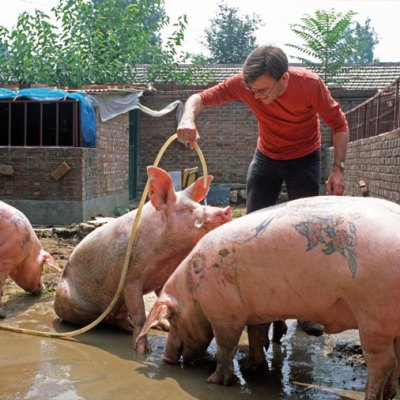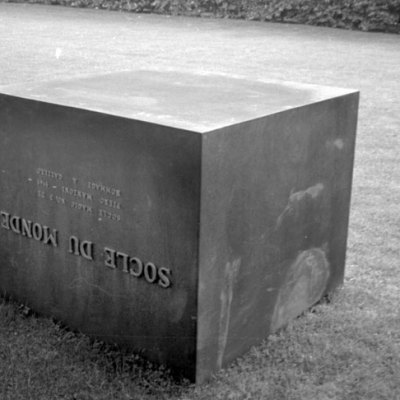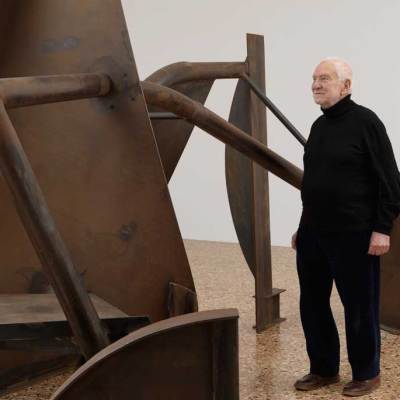As David Lamelas prepares for his first large-scale exhibition in the US, staged as part of Pacific Standard Time: LA/LA, the pioneering conceptual artist talks to Imelda Barnard about space, identity, and taking advice from Anthony Caro
Your upcoming exhibition at the University Art Museum, CSU Long Beach, is the first retrospective of your work in the US. What do you think about this show, particularly in the context of Pacific Standard Time?
The exhibition includes a selection of my work from 1964 to the present day. It has made me realise that the works may look very different – films, paintings, sculpture, installations, time-based pieces – but they all deal with the same interests. When I was younger, I was just doing things one after another, without fully reflecting on them. This show is connecting me with my Argentinian past, my London past, and my links with Los Angeles.
You’ve lived between cities for many years. How has this nomadic lifestyle shaped your work?
Firstly, I don’t feel unsettled; I feel very settled in myself. When you are settled in yourself, you make the city and the countries around you your home. I believe in cultures across borders – unfortunately Britain is now going through Brexit, which is terribly painful to me. When I moved from Argentina to London, my life opened up. I strongly feel that it’s good to keep your own culture, but it’s also important to integrate into other cultures – a work like Desert People [1974] takes on a new urgency today.
I adapt very well. When I moved from Buenos Aires to London, in six months I was a Londoner – I stayed for nine years. Was I British or Argentinian? I am British as much as Argentinian, and now I am Angeleno as much as British-Argentinian. I am Argentinian-British-Angeleno.
There’s also a restlessness to the way you jump between media – you seem interested in disturbing the lines that separate disciplines.
I believe that the idea comes first, and the medium is determined by the concept. It could be a painting, a drawing, an etching, a sculpture, a film, or it could be a situation. I am a filmmaker in that I make films; but I wouldn’t say a painter, I wouldn’t say a sculptor, but an artist who uses those mediums. I’m a producer of ideas.
You trained at St Martin’s under Anthony Caro. How did that period impact your subsequent work?
That was a fabulous time; I wish I could relive it all over again. Going to St Martin’s was magical, it opened my horizons. When I arrived there in 1968, I was already an international artist even though I looked like a kid: I was at the Venice Biennale [1968] and the São Paulo Biennial [1967]. But being at St Martin’s as a student humbled me; it made me begin again.
Anthony Caro said to me one day, ‘Mr Lamelas, you’re never here at the studio.’ I said, ‘Well, Mr Caro, I am doing conceptual art films,’ and he said, ‘Mr Lamelas, if you want to make films, go to film school. This is the sculpture department.’ Then I bought two plates of aluminium iron and made sculptures. I’m very glad; I made pieces that otherwise I would never have made.
In what ways were you thinking about sculpture at this time?
The process of, let’s say, dismantling sculpture from the object started early. I was always troubled when I saw a sculpture by Rodin, or Henry Moore, or Barbara Hepworth – they had that weight and monumentality. I wanted to get rid of that, so that the important thing was not the bronze, or the metal, or the stone, but the thinking around it. It always fascinated me that open space isn’t empty; it has a volume, a volume of void. The idea of void brought me to the idea of time; time is void of time itself, and time has no volume. My work Time [1970] was about trying to give an idea of time, like making a non-physical sculpture.
But space comes first: you’re in London and I’m in LA but we’re sharing a space. I’m interested not just in physical space, but how we are in a space of togetherness – how we move and function in this space, and the architecture around us.
Photograph documenting Signalling of Three Objects by David Lamelas in Hyde Park, London, 1968. Courtesy of the artist and Kayne Griffin Corcoran

Did you feel part of a British conceptual art movement during these years?
My arrival at St Martin’s coincided with the birth of British conceptualism so I feel like I arrived at the right time. I met people such as John Latham and Barry Flanagan who were dealing with similar concepts; the idea was to move forward.
I used to visit the library of the British Council in Argentina and go through Studio International, seeing what artists were doing in the UK and realising they were working in the same vein as me. You can be thousands of miles away yet the thinking is similar. Migration is not just a physical thing.
Your work often deals with text. Do you think of language as an art form?
Definitely. My 1970 book Publication deals with this very question of whether language can become an art form. Working on the book was like going to university. When I was in London I was interested in the gap between written language and other forms of language – and our process of cognition. When you tell me something, it takes a few seconds for me to understand what you’re saying, and for me to reply to you. And the timing is different between the time of listening to the time of reading. This is where the idea for my Reading Films [1970] came from.
Much of your work interrogates art’s communicative function. Are you suspicious of information?
I have always been very suspicious of information. Even as a child, I was aware how politicians say one thing and do another. And I was suspicious of media. I always liked reading newspapers. My father used to buy the equivalent of The Times in Argentina – I saw pictures of politicians, actors, movie stars, and thought how fake they were, but then I realised that they were products of the media. It’s a question of trust. Now we’re talking about fake news. Maybe I create this fake news. People say, what is art useful for? And I think art is useful because it anticipates the future.
Are you a political artist?
I think the role of the artist in moments of crisis is to keep quiet and look and try to understand – to produce work out of what you see. Am I a political artist? That’s a funny question, because I always denied it, but now I realise that I am. I’m not defending any particular cause, I’m more interested in the obstruction or structure of politics; how politics affects our thinking, our lifestyle. Politics changes but what remains permanent is trying to resolve how humans live together on this planet; that is what is important. It’s not what the politicians do, they come and go; but we stay.
Are you influenced by art history?
Very much so. The first painting that affected me was Las Meninas by Velázquez – I saw it at the Prado when I was eight and it was a real eye-opener: not only about the structure of painting, but about social structure and the role of the artist. I have always been interested in Cubism, where the idea was to represent the world as flat. But this flatness is already a fiction of a three-dimensional world.
‘David Lamelas: A Life of Their Own’ is at the University Art Museum, CSU Long Beach, Los Angeles, from 17 September– 10 December.
From the September 2017 issue of Apollo. Preview and subscribe here.



